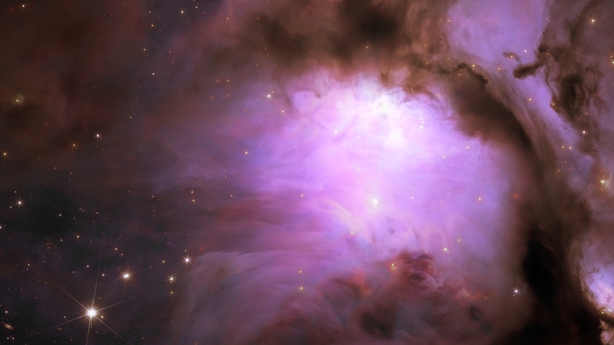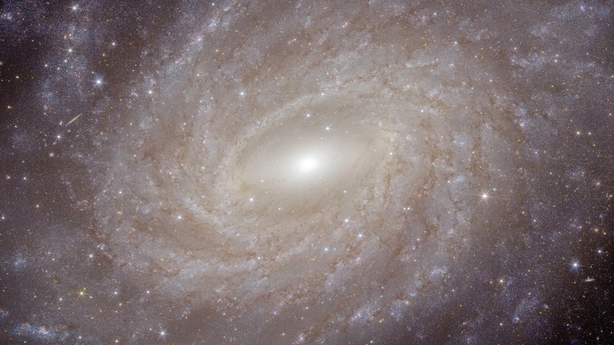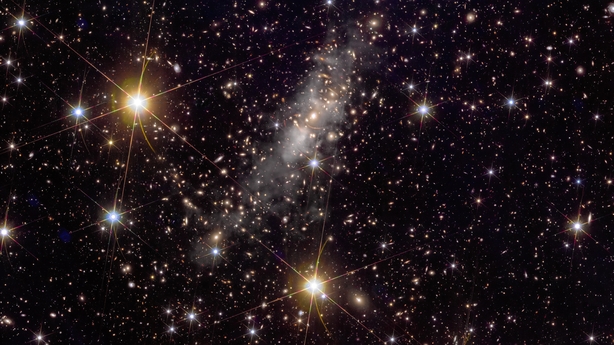Analysis: Among the discoveries Euclid has made are new-born stars and planets, extragalactic star clusters, and very distant bright galaxies
This morning sees the public release of some important scientific results – and some very pretty pictures – from the European Space Agency's Euclid spacecraft. The story of what has happened in the year or so since Euclid blasted off from Cape Canaveral is one both of successes and setbacks, and the public release of new data represents an opportune moment for an update on what has been happening behind the scenes in space.
Launched on 1st July 2023, Euclid’s mission is to map the distribution of distant galaxies across about one-third of the sky to extract information about the constituents of the universe, and test whether our current ideas about cosmic evolution are correct. After a perfect launch, Euclid made its way on schedule to the 2nd Lagrange Point (L2) of the Earth-Sun system, a journey of 1.5 million km that took about a month. Once in orbit at L2, work began on commissioning, testing and calibrating the instruments attached to Euclid’s 1.2m telescope.
From the European Space Agency, WATCH the broadcast as 5 new images from Euclid are released
There are two complementary instruments: one (called VIS) that works with visible light; and another (called NISP) that works in the near-infrared. These instruments are capable of making extremely high-resolution images but in order to work the telescope has to be pointed accurately. It was very soon realised that there was a problem with the operation of the Fine Guidance Sensor (FGS) used to fix the pointing of the telescope which was getting confused by bright flashes caused by high-energy particles hitting its detector. This was alarming, but eventually fixed by a software update and the mission continued after a delay of some weeks.

Several other issues have arisen, all of which were anticipated to some extent but had to wait until Euclid was actually in space before they could be properly characterised and dealt with. These include stray light and "ghosts" caused by unwanted reflections inside the optical system. The former has been dealt with by avoiding particular orientations of the spacecraft and the latter by removing the artefacts in software. A further problem is caused by X-rays managing to pass through the shielding. The same solar flares responsible for the beautiful Northern Lights seen recently can play havoc with sensitive instruments. Yet another problem has been a build-up of ice on one of the mirrors in the optical system. That has been addressed by heating up the instruments temporarily, but a longer-term solution is still being worked on.
Read more: All you need to know about Euclid's six year space mission
It is an old military adage that "no plan of battle survives first contact with the enemy", and that has certainly proved to be the case with Euclid as it confronted the hostile environment of space. Despite the gremlins, however, work to verify the performance of the telescope and instruments has progressed sufficiently well that the survey proper started in mid-February. At that point, management of Euclid was handed over from the European Space Agency to the Euclid Consortium, a group of over 2,500 scientists around the world whose task is to conduct they survey and analyse the data from it.
The first images from Euclid were released to the public on November 7th 2023. These Early Release Observations (EROs) do not form part of the main Euclid survey but are essentially byproducts of the testing and calibration phase of the mission, made by ESA before the mission was handed over to the Euclid Consortium.
From the European Space Agency, How Euclid will map the Universe
The latest release from Euclid contains five new ERO images that were not part of the November 7th release. These comprise observations of: Messier 78 (a reflection nebula); Abell 2390 and Abell 2764 (two giant clusters of galaxies); NGC 6744 (a spiral galaxy very similar to the Milky Way); and the Dorado Group (a loose agglomeration of galaxies).
All the raw data from the EROs – both new and old, comprising 17 targets in all – have been made available to the public to download and there are technical papers describing their analysis. Among the scientific highlights are: new-born free-floating planet candidates; newly identified extragalactic star clusters; new low-mass dwarf galaxies in a nearby cluster of galaxies; and the discovery of very distant bright galaxies (seen during the first billion years of the Universe).

There are also five reference papers from the Euclid Consortium paving the way for the main Euclid survey: one – with 1112 authors! - is a general overview of the Euclid mission; there are three papers describing the Euclid's instruments and their calibration; and finally one other paper describing the Flagship computer simulations that will help scientists understand the survey.
Read more: Here are the space and astronomy events to look out for in 2024
Not everything has gone entirely according to plan, but through the hard work and ingenuity of the instrument teams, the main survey operations are now under way and the data stream is being sent back to Earth to be handled by the Euclid ground segment where it is processed and combined with other observations. Managing this is a challenge in itself: in the end the data set will be over 30 Petabytes in size.

The next thing to look forward to from Euclid is a taster of the survey around March 2025. Called the Quick Release (Q for short), this will be a taster of the kind of observations we can expect from the full survey. The first year of survey data (DR1) will be released in June 2026, and there will be other intermediate results, but we will have to wait until 2031 for the survey to be completed.
Follow RTÉ Brainstorm on WhatsApp and Instagram for more stories and updates
The views expressed here are those of the author and do not represent or reflect the views of RTÉ





